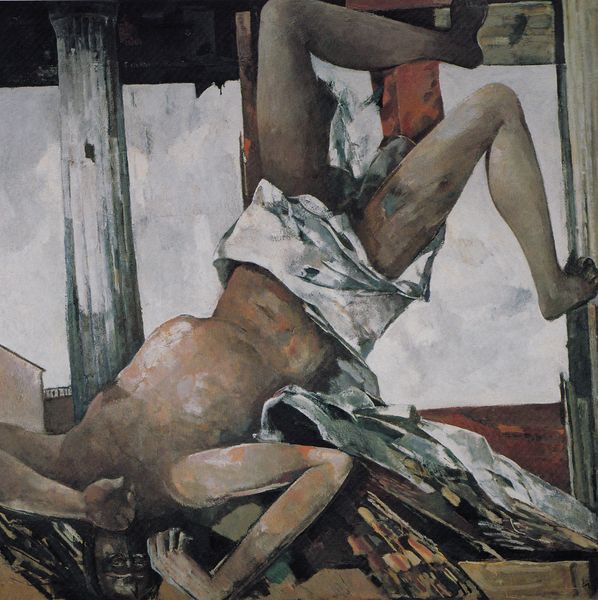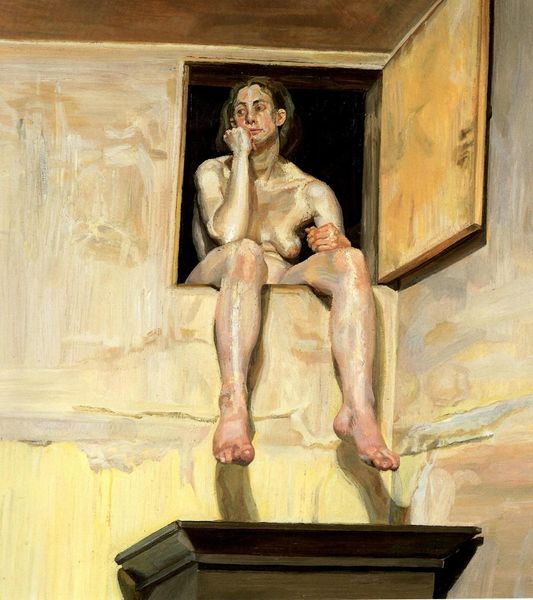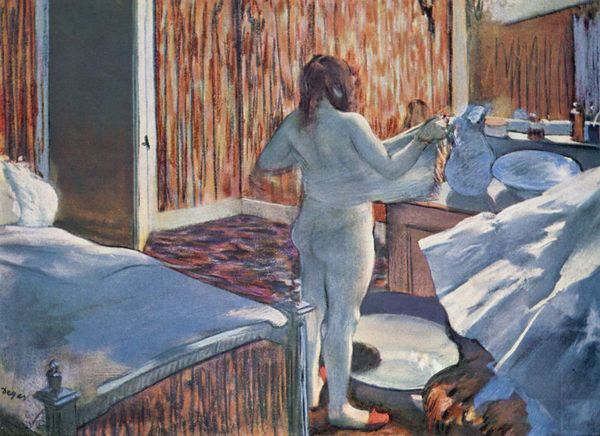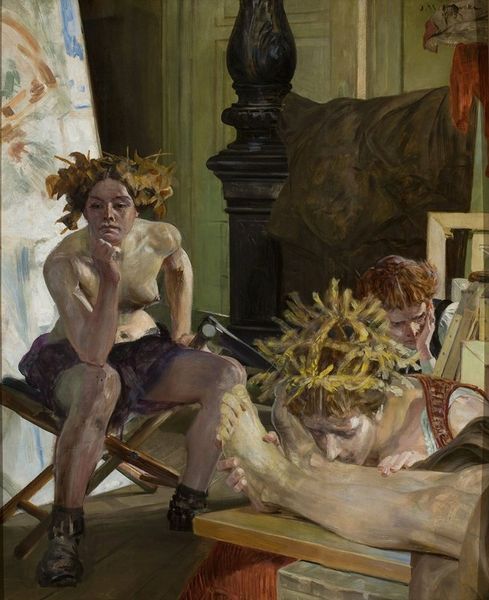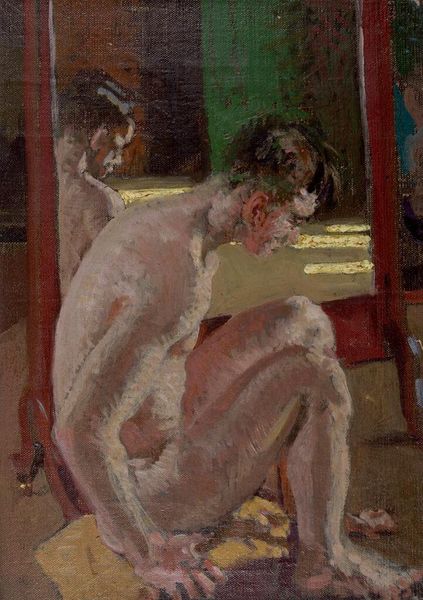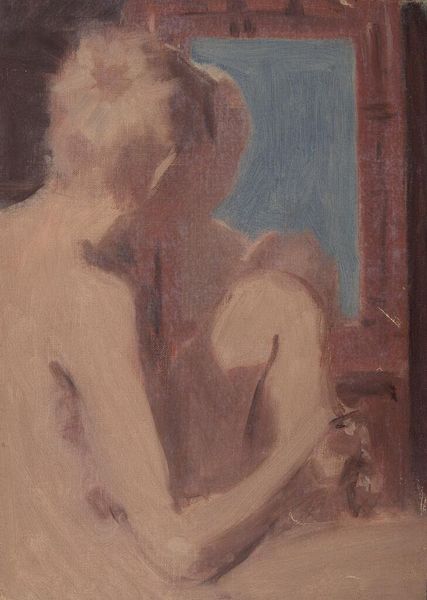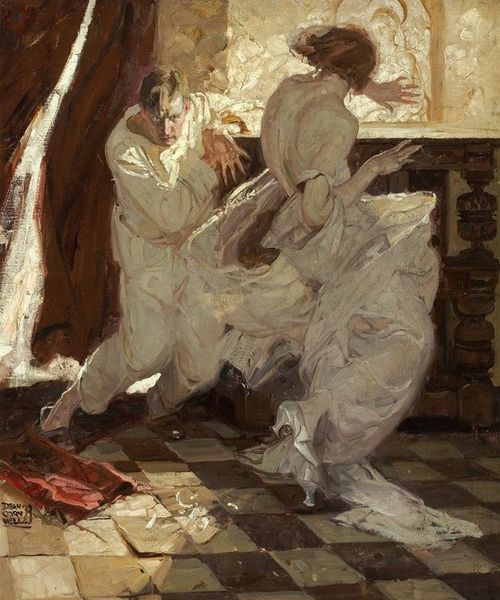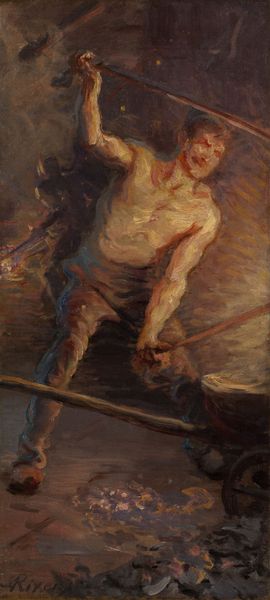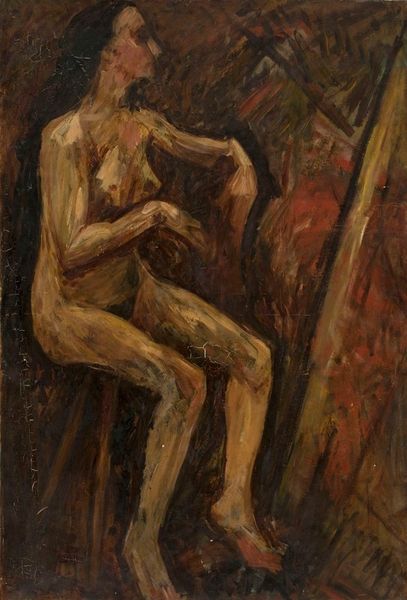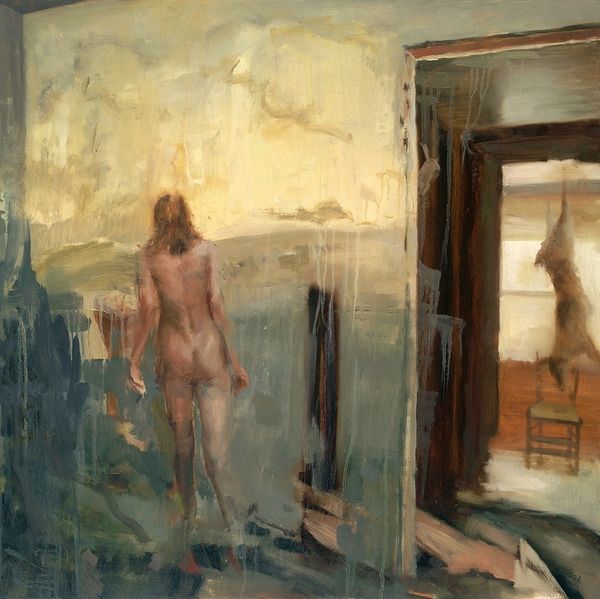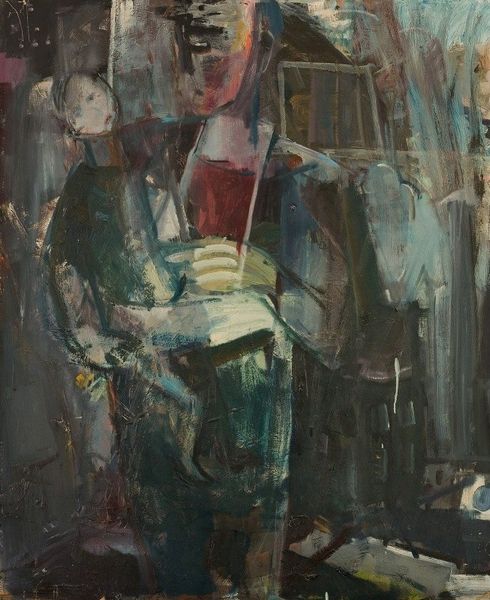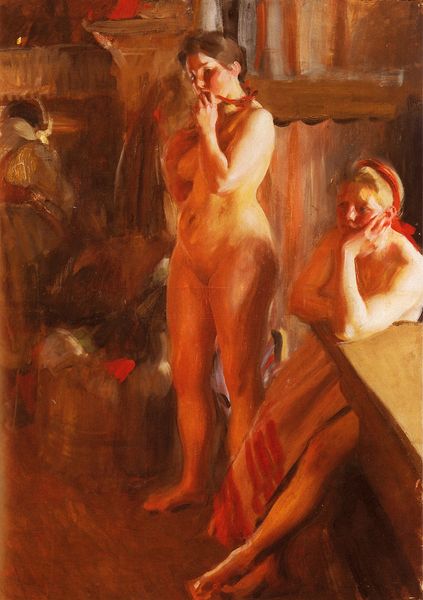
painting, oil-paint
portrait
figurative
painting
oil-paint
figuration
oil painting
neo expressionist
expressionism
genre-painting
expressionist
Copyright: Public Domain: Artvee
Curator: Jacek Malczewski’s “Satyr and a Model,” an oil on canvas from 1913. It’s quite a striking piece, wouldn’t you agree? What are your immediate impressions? Editor: A peculiar theatricality pervades the canvas. The satyr seems to leer, and the model, perched on that precarious ladder, strikes a deliberately nonchalant pose. There is an uneasy tension there that I think many people might recognize today. Curator: Absolutely. Malczewski often explored the complex dynamics between models and artists, infusing his works with symbolism tied to Polish identity and national aspirations within the context of the tumultuous early 20th century. The satyr in this case isn't merely a mythical figure; it represents a raw, perhaps repressed, aspect of the Polish psyche struggling for expression and freedom. The painting speaks to issues of representation, objectification, and the male gaze in ways that feel very contemporary. Editor: The ladder she sits upon, the interior and exterior views framed as well as the position of each subject do much to define social spaces and hierarchies. A ladder for access is here a type of ironic "throne." What did this imagery mean in terms of Polish social and cultural institutions? Curator: Considering the sociopolitical landscape of early 20th-century Poland, under partition and yearning for autonomy, the figure of the satyr becomes incredibly relevant. He could symbolize Poland’s complex relationship with its own sensuality and earthiness – the very essence of its identity – at a time when national survival depended on redefining the boundaries and structures of those same institutional and personal identities. Malczewski encourages the deconstruction of how power and freedom become, for Poland, intrinsically tangled together, revealing our deepest desires as individuals. Editor: It's compelling how Malczewski uses this mythological lens to examine power structures. Curator: Precisely, and by confronting us with the interplay of historical narratives and contemporary identity, Malczewski prompts a dialogue, and, through dialogue, an understanding of ourselves. Editor: So many ways to frame our relationship with the past through imagery! Curator: I’m glad we had this time to explore the work together!
Comments
No comments
Be the first to comment and join the conversation on the ultimate creative platform.
